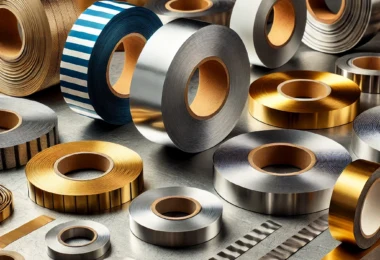Stainless steel self-tapping screws are the unsung heroes of the fastener world. They play a crucial role in various industries, from construction to manufacturing. If you’re looking for high-quality screws that can securely fasten materials like metal, wood, and plastic, you’ve come to the right place. In this article, we’ll explore the world of stainless steel self-tapping screws, specifically focusing on thread sizes ST 2.2 to 6.3, and their wide range of applications.
The Anatomy of Stainless Steel Self-Tapping Screws
Before diving into their applications, let’s understand what makes stainless steel self-tapping screws unique. These screws feature a sharp, pointed tip that allows them to create their own threads as they are screwed into a hole. This eliminates the need for pre-drilling, making them incredibly convenient for various applications.
Stainless steel, known for its corrosion resistance and durability, is the primary material used in manufacturing these screws. This ensures they maintain their structural integrity even in harsh environments, making them an ideal choice for outdoor or marine applications.
Thread Sizes ST 2.2 to 6.3
Stainless steel self tapping screw come in a wide range of thread sizes, with ST 2.2 to 6.3 being among the most commonly used options. These sizes offer versatility and adaptability for different projects. Let’s take a closer look at these thread sizes:
- ST 2.2: This smaller size is ideal for applications where precision and finesse are required. It’s commonly used in electronics and delicate woodworking.
- ST 3.5: The ST 3.5 is a versatile size that can handle a variety of materials, from wood and plastic to thin metal sheets. It’s commonly used in furniture assembly and automotive applications.
- ST 4.2: A slightly larger size, the ST 4.2 is suitable for applications where a stronger grip is needed, such as securing metal roofing or joining thicker pieces of wood.
- ST 4.8: This size is often used in more demanding applications like construction, where durability and strength are paramount.
- ST 5.5 and ST 6.3: These larger sizes are designed for heavy-duty applications and can effectively fasten thick metal sheets and wooden beams.
Applications Across Industries
Stainless steel self-tapping screws find their place in a multitude of industries due to their versatility and durability. Here are some common applications:
- Construction: In construction projects, these screws are used for securing roofing, cladding, and framing. Their corrosion resistance ensures long-lasting structural integrity.
- Manufacturing: Manufacturers rely on self-tapping screws for assembling products made from various materials. The ability to create threads as they are screwed in simplifies the production process.
- Automotive: In the automotive industry, these screws are used for securing interior components, panels, and trim pieces. Stainless steel ensures they remain rust-free even in challenging conditions.
- Electronics: The smaller thread sizes, like ST 2.2 and ST 3.5, are ideal for electronics assembly, where precision and a secure fit are essential.
- Marine: Given their resistance to corrosion, stainless steel self-tapping screws are a staple in marine applications, securing everything from boat fixtures to dock construction.
- Woodworking: Woodworkers appreciate these screws for their ease of use and ability to create strong, reliable joints without the need for pilot holes.
- Plastic Fabrication: Plastic materials can be delicate, but stainless steel self-tapping screws offer a secure way to fasten plastic components without causing damage.
Conclusion
In the world of fasteners, stainless steel self-tapping screws in thread sizes ST 2.2 to 6.3 are indispensable. Their ability to create threads as they are driven into various materials, along with their corrosion resistance and durability, makes them a reliable choice for a wide range of applications. Whether you’re building, manufacturing, or assembling, these screws are a testament to the ingenuity of engineering and continue to play a vital role in making our projects come together seamlessly.
















